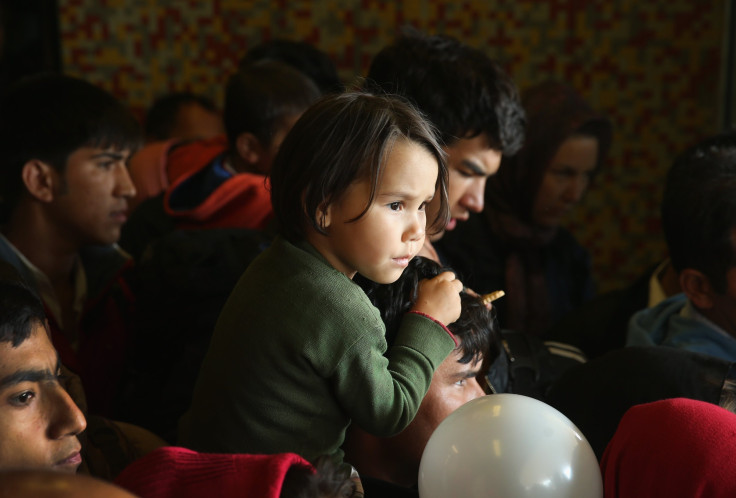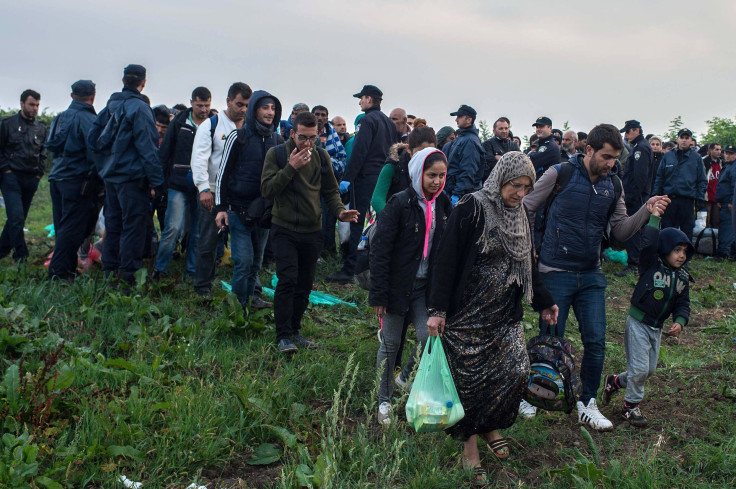Refugee Crisis 2015 Explained: Who Is Coming To Europe; Where They're Headed And Why

Tensions were high at an emergency European summit Thursday to discuss plans for resettlement of some 120,000 of the half million refugees who have arrived on Europe's shores since January. Hungary, Serbia and Croatia mounted an opposition to refugee quotas against a backdrop of growing chaos in the region. More than 51,000 people have arrived in Croatia since Sept. 16, and thousands of others were stranded on the Serbian border.
As European authorities struggled to decide on a response to the crisis, people around the world have watched as refugees, especially from war-torn Syria, surged into Europe by the thousands every day in recent months. After an emergency European Union summit Wednesday night dragged into Thursday, confusion over the crisis continued. Here's a roundup of the latest facts and figures of who is coming and why, where they want to go, and how the EU plans to move ahead.

The Refugees
Over 500,000 people have arrived in Europe since January, according to the United Nations, and more than half of those are Syrians fleeing an escalating civil war in their home country. About 54 percent of all arrivals have been Syrians, according to the U.N., followed by 13 percent Afghans, and 7 percent Eritreans. Nearly everyone arriving from those particular countries qualifies as a refugee. Around 84 percent of all arrivals have come from the top 10 refugee-producing countries in the world.
A legal definition has existed for refugees since 1951. The U.N. defines a refugee as “a person who is outside his or her country of nationality or habitual residence; has a well-founded fear of being persecuted because of his or her race, religion, nationality, membership of a particular social group or political opinion.” The U.N. and international nonprofits have called the current situation in Europe the worst refugee crisis since World War II.
Many refugees have been arriving as families, and more than a quarter of refugees are either women or children. Women account for 18 percent of this year’s arrivals so far, 13 percent are children, and 69 percent men.

Shifting Routes Into Europe
Of the more than 500,000 refugees who have arrived since January, at least 487,497 of those people have arrived via smugglers' boats across dangerous Mediterranean or Aegean Sea crossings. Greece and Italy have been the top two destinations of these sea crossings, chiefly due to their geographic proximity to Turkey and North Africa, respectively. Nearly 3,000 people have died attempting to make the crossing after overcrowded boats sank or were struck by other ships.
Refugees and migrants have been taking increasingly circuitous, and often life-threatening routes as borders have closed, particularly in the past month in Eastern Europe. Hungary finished building a metal wall around its border on Aug. 30. The southeastern Balkans route, which has been one of the most popular paths to Austria and Germany, has been disrupted by border closings in Hungary and other neighboring countries.
These border obstacles have pushed refugees to more lengthy and roundabout paths into neighboring Eastern European countries, or even up through the Arctic Circle. Check out the International Business Times’ map showing where people start their journeys and what routes they have been taking to get to Europe.
Dream Destinations
A large proportion of arrivals -- the exact numbers are not yet known as most refugees have not yet officially applied for asylum -- want to settle in countries in Northern Europe, especially Germany, the United Kingdom and Sweden. Refugees and migrants have said they chose those countries for a variety of reasons, with anecdotal evidence pointing to the strong economies, generous social welfare systems and ample job opportunities in those nations.
The U.K. in particular has been a favorite destination as many people arriving have said they already have family there or can speak some English and would be better able to integrate. Prime Minister David Cameron has been reluctant to accept refugees and recently said the nation would take 20,000 people over the next five years.
Germany has also been one of the top final destinations, because of its strong economy as well as Chancellor Angela Merkel's outspoken desire to welcome refugees. In comparison to the U.K., Germany has said it could welcome as many as 800,000 refugees by the end of 2015 alone. After first instituting an open-door policy, Germany began closing its borders with Austria on Sept. 13, though German lawmakers have maintained they will welcome as many asylum-seekers as possible.

What's Next For European Policy?
The reaction of European lawmakers, though varied, has often been split roughly between Western and Eastern Europe. In this sense, Eastern Europe applies to those non-Western European countries where refugees have been transiting, such as Hungary, Serbia, Croatia, the Czech Republic and Greece.
Western European countries such as Germany, France and Sweden have taken the approach of trying to integrate as many refugees as possible and encouraging the European Commission to adopt a system where all nations will have a mandatory resettlement quota imposed, based on the wealth and size of that country.
This approach has been criticized by some citizens who cite the high cost of integrating tens of thousands of people and paying for their social services. Proponents of this plan cite the aging demographics of Europe and the need to rejuvenate workforces with a younger population, especially since many Syrians come from professional, well-educated backgrounds and could be an asset.
Eastern Europe has used a border containment approach, building walls and barbed-wire fences to keep people from entering. Reasoning behind the border closings has ranged from self-avowed fears of Muslim invasion to the economic difficulties of welcoming refugees. Detractors of this approach have cited the humanitarian quandaries of treating refugees like a military invasion while proponents have said that Eastern European nations are not as wealthy as those in the West and cannot take refugees.
After a heated monthlong debate, EU leaders pushed through a resettlement plan Tuesday to relocate 120,000 people through mandatory quotas. Central and Eastern European nations have continued to protest the quotas.
© Copyright IBTimes 2025. All rights reserved.






















